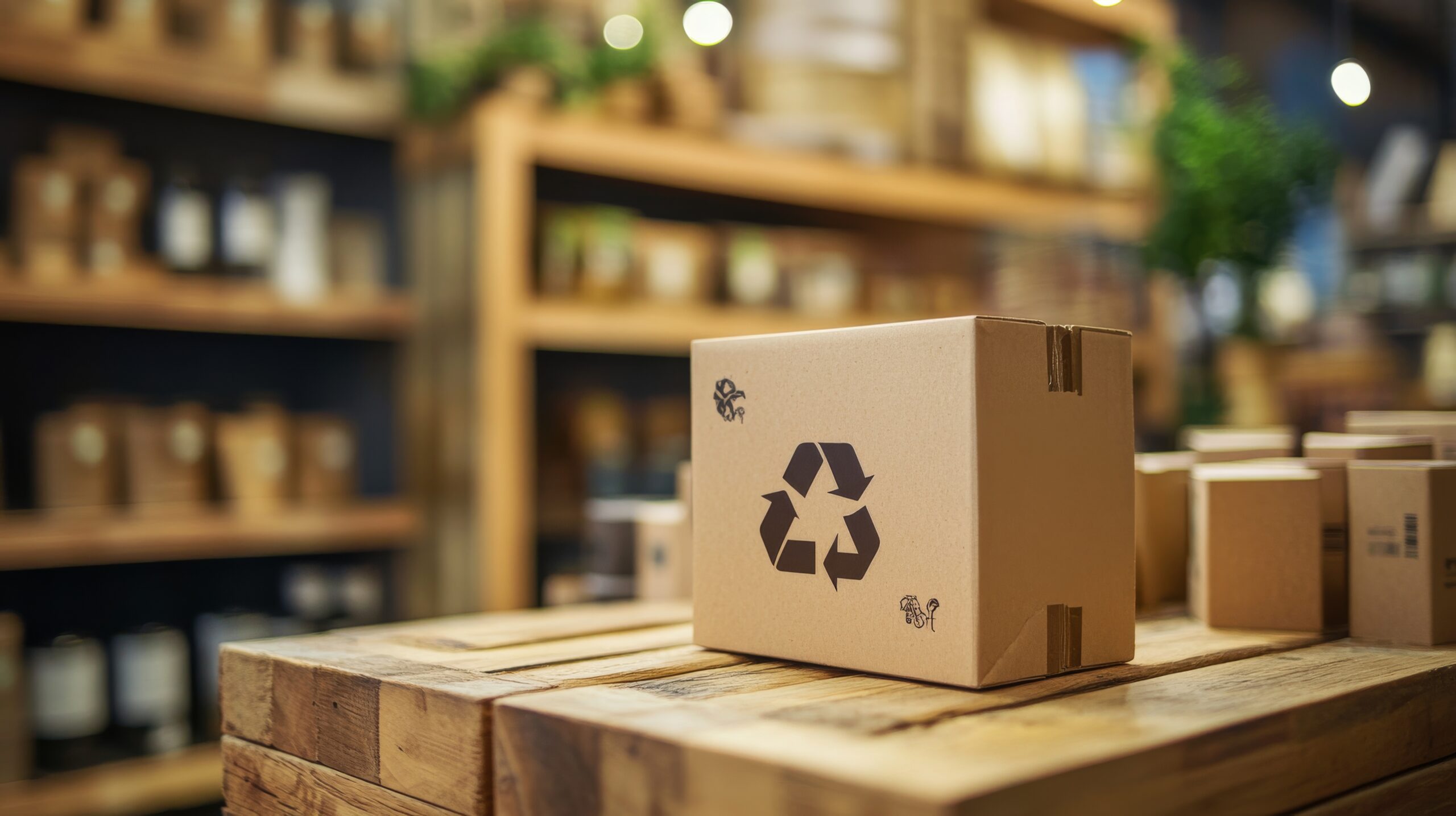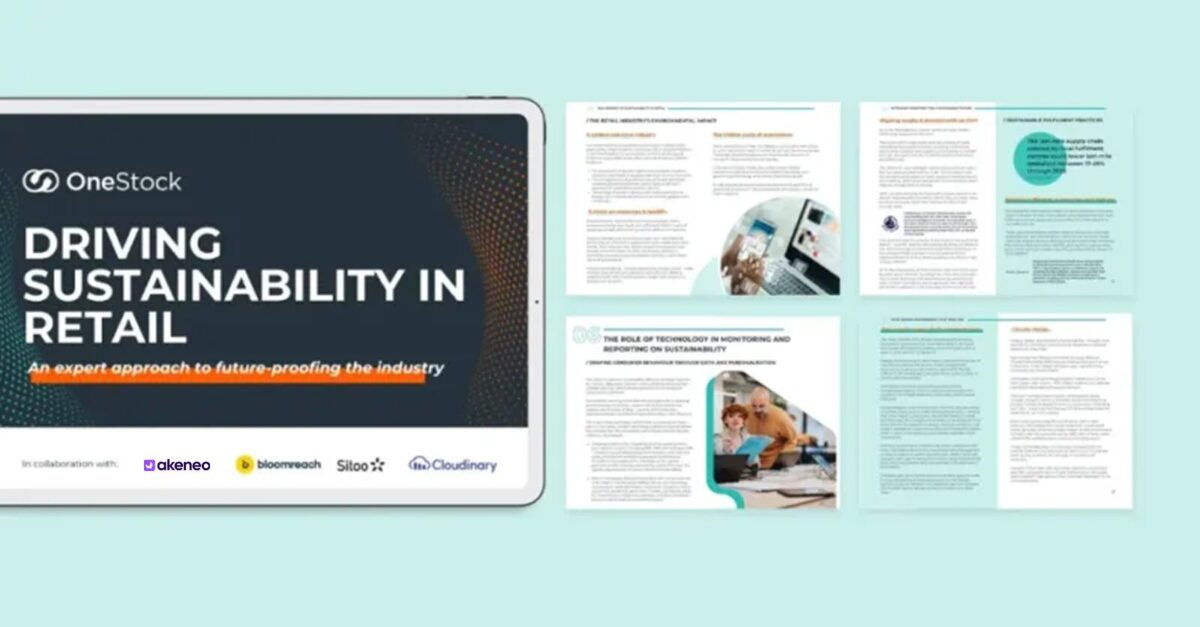Retail's environmental footprint is significant, contributing to carbon emissions, resource depletion, and waste. Discover how the industry is responding by implementing sustainable supply chains, integrating circular economy principles, and leveraging technology to reduce its ecological impact.

Table of Contents
Keywords
The way we shop is changing, and not just because of new trends or technologies. More and more of us are thinking about where our stuff comes from, how it’s made, and what happens to it when we’re done with it. From clothing to electronics to home goods, people are asking tough questions about the true cost of convenience and consumption, and that shift in mindset is putting pressure on retailers to do better.
From the energy used in production and shipping to the mountains of packaging and returned items that end up in landfills, the retail industry in particular has a massive environmental footprint. Fashion alone is responsible for 10% of all global carbon emissions, and the rise of eCommerce has only added new layers of waste and inefficiency. Behind every product on a shelf or in an online cart, there’s a complex system that can strain natural resources, contribute to pollution, and generate enormous waste.
The retail industry is a significant contributor to global carbon emissions, and it’s not always due to the obvious culprits like shipping operations and reverse logistics. Notably, Scope 3 emissions, those stemming from a company's supply chain, are 92 times higher than direct operational emissions.
From the extraction of raw materials to the final delivery of products, every stage of the retail value chain leaves a carbon footprint:
Retail’s environmental footprint extends far beyond carbon emissions. The industry is a major consumer of water, raw materials, and energy. At the same time, it contributes heavily to landfill waste. Single-use packaging, unsold inventory, and returned merchandise all too often end up discarded rather than reused or recycled.
Overproduction and unsold inventory exacerbate retail’s environmental burden. Each year, billions of dollars’ worth of goods go unsold, often ending up in landfills or incinerators. Fashion has become a notorious culprit, with some brands producing up to 52 micro-seasons annually to keep pace with trends. This cycle not only strains natural resources but also creates immense waste. In 2023, the fashion industry is estimated to have produced between 2.5 billion and 5 billion items of excess stock.
The rise of eCommerce has led to an explosion of packaging waste, increased emissions from last-mile delivery, and skyrocketing return rates, particularly in fashion and home goods. Product shipping and returns account for 37% of total greenhouse gas emissions, with emissions from return shipping alone totaling 24 million metric tons of Co2 in 2022.
Every search query, image load, video stream, digital transaction and cloud computation demands energy, and generating that energy emits more greenhouse gases. It’s estimated that tech contributes between 2.3 and 3.7% of global CO₂ emissions – the equivalent to the aviation industry’s total emissions.
Excessive packaging, though designed to protect goods, adds another layer of resource depletion and pollution. Retail is responsible for 40% of global plastic usage, with much of it failing to be recycled.
Sustainability in retail is about embedding responsible practices across the entire value chain, from sourcing to customer experience. There are a few foundational elements that are key to implementing sustainable retail practices:
New sustainability regulations and growing consumer expectations will require retailers to provide unprecedented levels of transparency across their supply chains. But the modern retail supply chain is a complex and multifaceted ecosystem, which includes sourcing raw materials, manufacturing goods, shipping finished products, warehousing, distribution to stores, picking and packing, order fulfilment, reverse logistics, and circular reintegration.
Such a complex physical network will require sophisticated technology to identify and address operational inefficiencies, reduce waste, and optimise product lifecycles at every stage. Retailers will need to address carbon emissions in their own operations, and in the wider value chain while working closely with suppliers to ensure ethical labor practices, reduce carbon emissions, and source renewable or recycled materials. This also involves rethinking vendor relationships, investing in supplier training, and using certifications to validate sustainability claims.
In a circular economy, products are designed and managed to maximize their value and minimize waste. Retailers are adopting strategies that keep products and materials in use for as long as possible, extracting maximum value before recovering and regenerating products at the end of their service life, and can be summarized into The 4 R;s:
Inventory management is a significant challenge for retailers, with inefficient practices leading to both excess stock and stocks-outs. Overstocking has long been the preferred option to maximise sales opportunities, but it comes with a high environmental costs, including increased resource consumption, carbon emissions and waste.
As new regulations demand that brands take responsibility for the full lifecycle of unsold stock, and businesses strive to meet their emissions targets, balancing stock levels effectively is now critical. However, a number of factors have made it increasingly difficult for retailers to plan inventory:
While some unsold stock can be marked down or recycled, if brands are to reduce the pressure their activities place on the planet, they will need to reduce the amount of stock that goes unsold in the first place.
To encourage consumers to shop more sustainably, retailers can shape their in-store and online experiences to highlight eco-friendly products and collections. For eCommerce search and browsing experiences, this starts at the product level with detailed product descriptions,
tagging products with sustainability-related attributes (e.g. organic, carbon-neutral, recycled, pre-loved), and prioritising these products within the search experience through product
recommendations.
Using AI-powered personalisation tools, retailers can connect product data with real-time customer behavioural data and tailor the customer journey to match the right products to the right customers. This allows brands to identify shoppers who are inclined to shop sustainably and cater their on-site experience to suit those preferences.
These same tools also enable store associates to deliver more meaningful in-person experiences. With enhanced product information and tailored recommendations available in the POS, they have the insights needed to guide consumers toward more informed and conscious choices. With instant access to detailed product data – such as materials, origin, environmental impact, and sustainability certifications – associates can confidently answer questions and help customers select products that align with their values.
It’s no secret that returns have a huge cost for the planet. Around 17 billion items are returned every year, generating 4.7 million metric tonnes of CO2 emissions and 2.3 million tonnes of waste.
In the past, customer returns have been considered an unavoidable cost of doing business, but a number of new digital technologies are helping shoppers make more suitable purchasing decisions – and reducing the likelihood of returns. In a world where customers shop across multiple channels, from online to in-store to mobile apps and more, consistency in product information ensures a seamless shopping experience.
When product details like size, material or features are presented clearly, customers feel confident in their purchasing decisions, which reduces hesitation and the likelihood of returns. Inaccurate or inconsistent information can lead to customer frustration, erode trust in a brand and increase costly returns.
From improving supply chain efficiency to enhancing product transparency and enabling smarter decision-making, modern companies that embed sustainability into the very fabric of their operations reduce their environmental footprint but also build stronger trust with consumers, meet evolving regulatory demands, and future-proof their business in an increasingly eco-conscious marketplace.
As sustainability continues to shape the expectations of customers, investors, and stakeholders alike, the businesses that leverage technology to drive meaningful change will be the ones that lead,not follow. Now is the time to invest in solutions that align profitability with responsibility, proving that doing good for the planet can also be good for business.
Discover actionable insights to reduce waste, optimise operations and meet growing consumer demand for greener practices.
